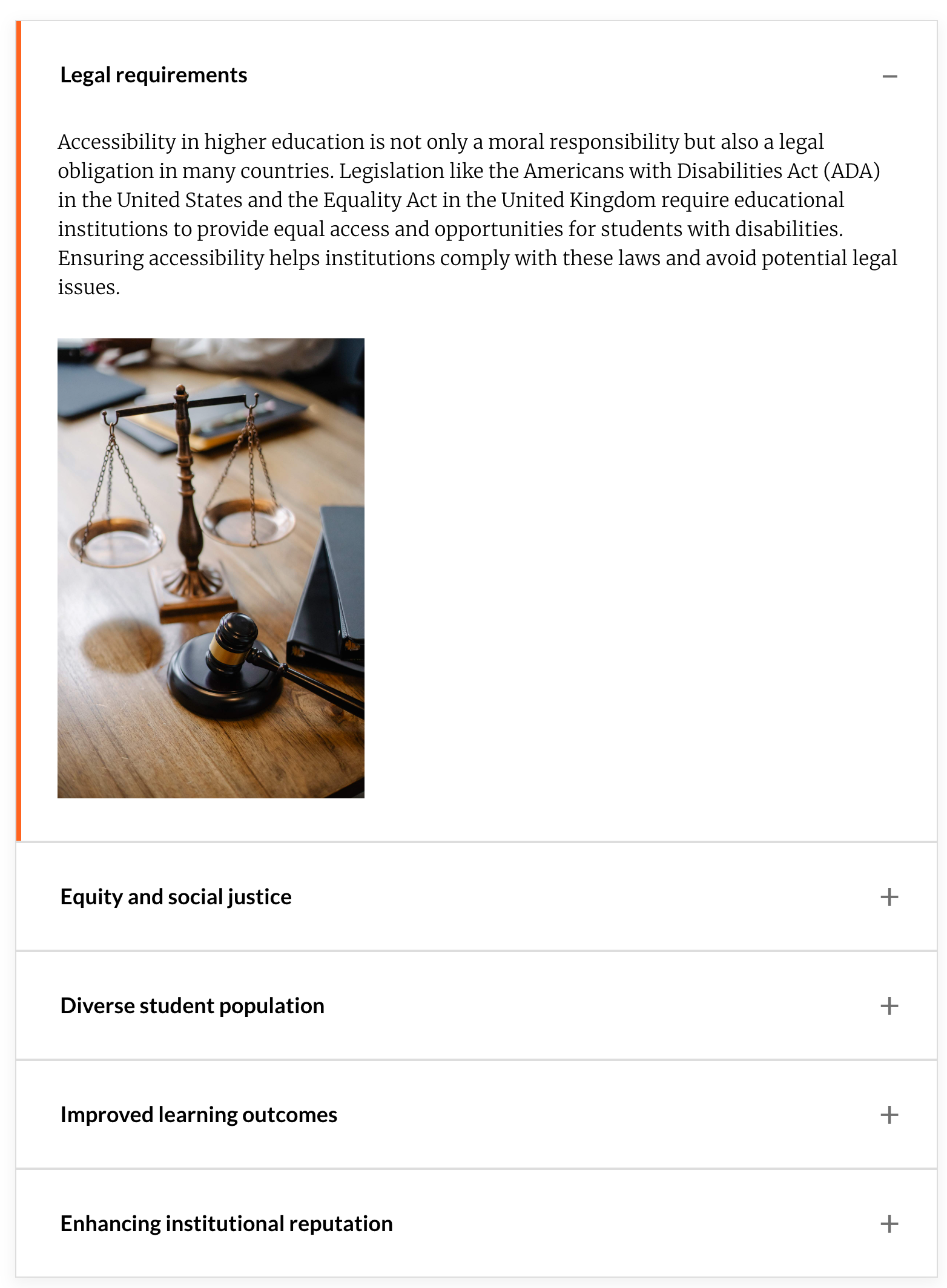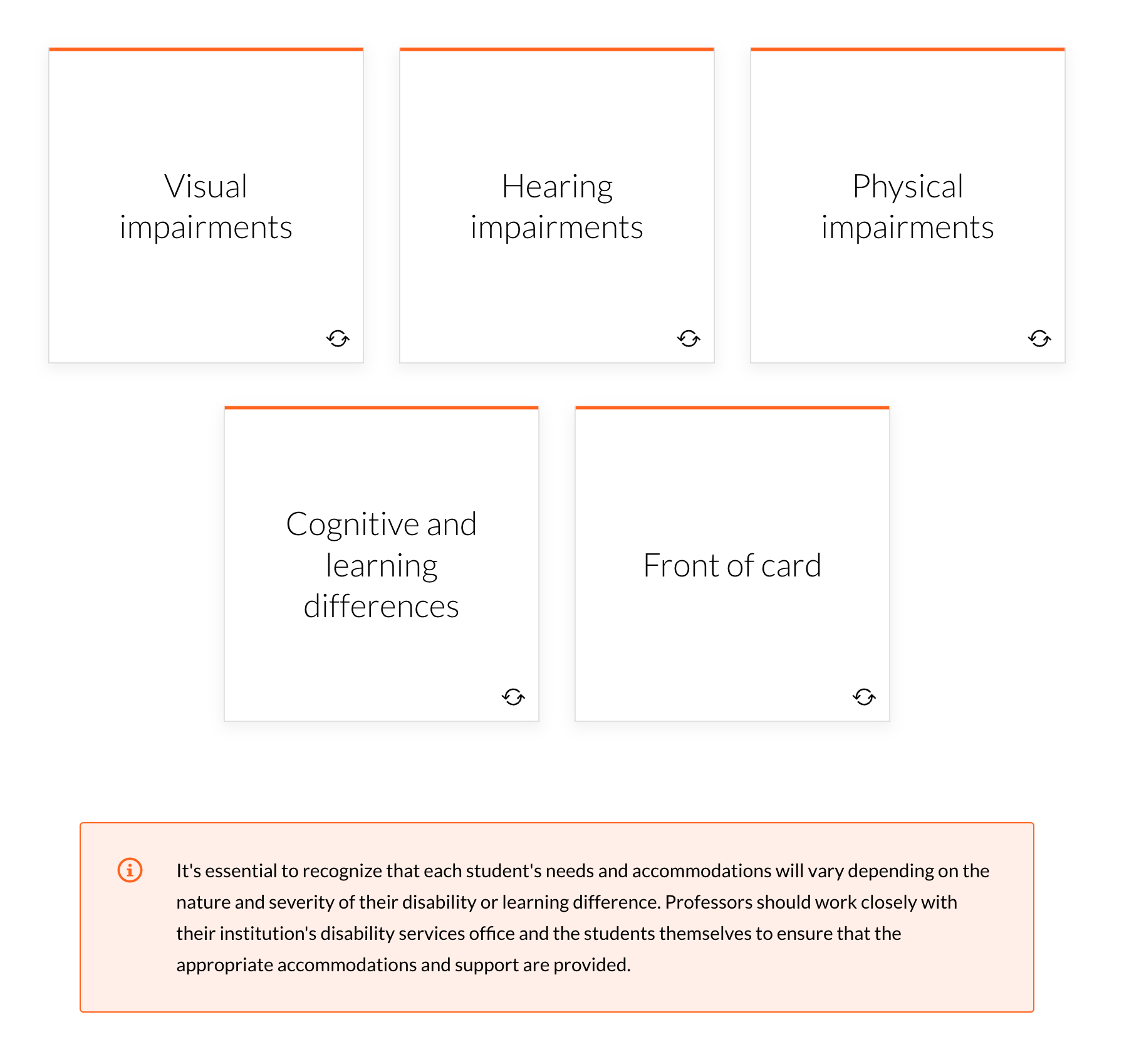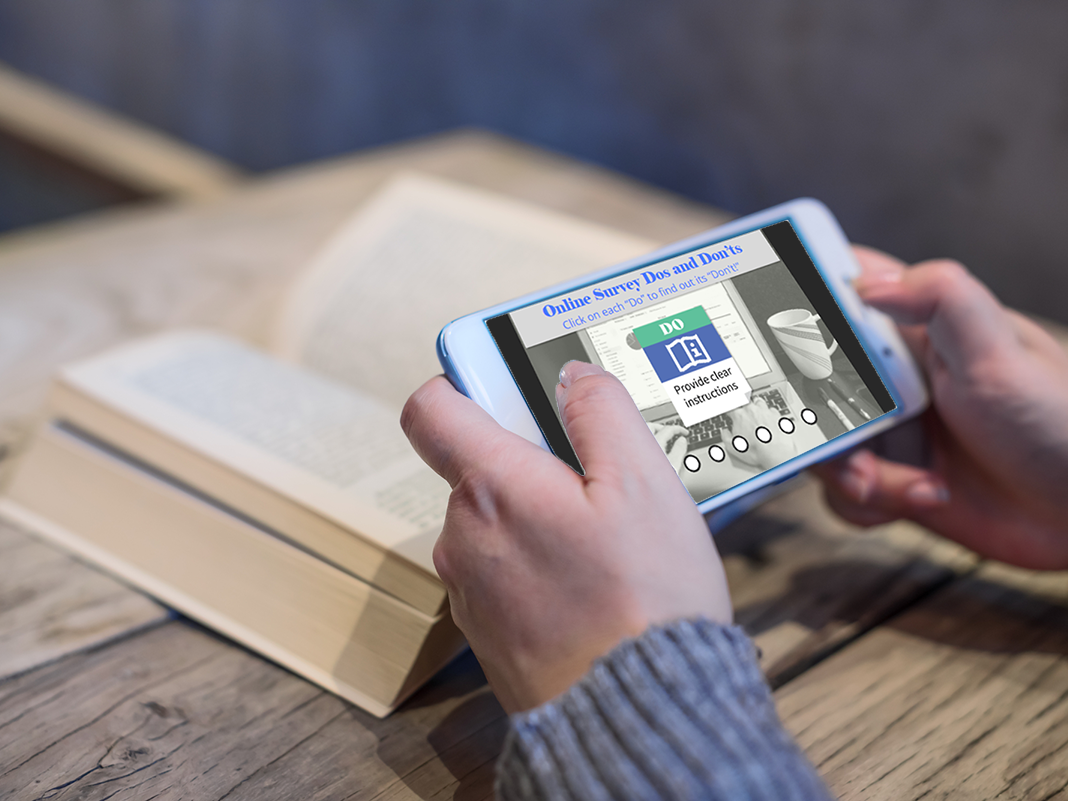This eLearning course equips college educators with the knowledge and skills necessary to foster inclusive learning environments in higher education settings.
Responsibilities: Instructional Design, eLearning Development, Content creation
Target Audience: University professors
Tools Used: Articulate Rise, Figma
Problem:
While speaking with my colleagues, I discovered a common problem: we all had students in our courses who needed accommodations for their learning differences, but we weren't skilled at knowing how or when to provide those accommodations. My goal was to explore the concepts of accessibility and inclusive education, as well as the importance of providing equal access to learning opportunities for all students, including those with disabilities and learning differences.
Solution:
I interviewed subject matter experts in the Accessibility Resources office, which led to the design of a 6-module eLearning experience. I shared this eLearning course with my fellow professors so that together we could create more inclusive classroom environments that support a range of learning needs in our students.
My Design Process
Analyze
In the initial phase of developing an online accessibility course for professors, I conducted research by employing a semi-structured, open-ended questioning approach in interviews with my colleagues. This allowed me to identify the challenges they face while providing classroom accommodations. Furthermore, I asked them to complete a card sort to gain insights into the content they would consider valuable in an accessibility course.
Next, I compiled a list of relevant course topics and formulated a structured outline for the course content. In order to build out the course content, I consulted with subject matter experts - staff members from the Accessibility Office. Their expertise contributed to the enrichment of each course section and assisted in the development of clear course objectives that would effectively guide the content.
Objective #1
By the end of the course, professors will be able to understand the concepts of accessibility and inclusive education, and recognize their importance in promoting equal access to learning opportunities for all students, including those with disabilities and learning differences.
Objective #2
By the end of the course, professors will be able to apply the principles of Universal Design for Learning (UDL) to create accessible and inclusive course materials, presentations, and assessments.
Objective #3
By the end of the course, professors will be able to develop accessible course content by implementing formatting guidelines and creating accessible multimedia content, such as captions, transcripts, and audio descriptions.
Objective #4
By the end of the course, professors will be able to design an inclusive syllabus that outlines clear learning objectives, course policies on accommodations, and flexible assessment and grading practices.
Design
I planned and organized the 6 modules of content using storyboarding techniques in Microsoft Word. Since I planned this to be a more traditional course in Rise 360, I scripted out the course content in linear manner in Word.
Design Approach
I adopted a learner-centered approach that incorporated adult learning theories, such as andragogy and transformational learning, by designing the course in a way that actively involves adult learners in the planning and evaluation of their instruction, connects learning to real-life experiences, and fosters critical reflection and discourse. This approach encourages participants to examine their beliefs, values, and assumptions, ultimately leading to a shift in their perspectives on accessibility and inclusive education.
By creating a supportive learning environment, the course empowers educators to take charge of their professional growth and apply new strategies to create more accessible and inclusive learning experiences for their students. I also included quiz questions at the end of each module to help learners monitor their understanding of the content.
Develop & Implement
I developed the final product using Articular Rise 360. I customize the colors and fonts for a consistent look and feel. To add engagement, I included a variety of interactive elements such as:
- tab interactions
- accordion interactions
- process text
- sorting activities
- flashcards
- quiz questions, including fill-in-the-blank, matching, true/false, and multiple choice
See samples of the interactive course content below.



Evaluate
Moving forward, I plan to gather summative assessment data through surveys and course evaluations at the end of the next semester, after professors have completed the accessibility course and had the opportunity to implement changes in their courses. These surveys and evaluations will concentrate on aspects such as course content, learning materials, and overall satisfaction. This data will be instrumental in determining the effectiveness of specific course elements and informing any necessary content adjustments.
Additionally, I will collect data on the pedagogical changes professors have made based on the insights gained from the accessibility course. This valuable information will help me assess the long-term impact of the course on their teaching practices and approach to accessibility. By combining this data with other evaluation methods, I will gain a comprehensive understanding of the course's effectiveness in promoting inclusive learning environments within higher education settings.






